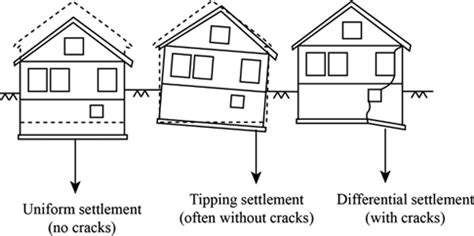Settling Foundation: A Comprehensive Guide
Foundation settling is a common concern for homeowners, impacting structural integrity and potentially leading to costly repairs. Understanding the causes, signs, and solutions is crucial for maintaining a safe and stable home. This comprehensive guide explores everything you need to know about settling foundations, from prevention to remediation.
What is Foundation Settling?
Foundation settling refers to the gradual sinking or shifting of a building's foundation. This isn't necessarily a cause for immediate alarm; all foundations settle to some degree over time. However, excessive or uneven settling can lead to significant structural problems. The degree of settling that constitutes a problem depends on several factors, including the type of soil, the foundation's design, and the building's age.
What Causes Foundation Settling?
Several factors contribute to foundation settling. Understanding these causes can help in prevention and early detection.
Soil Conditions:
- Expansive Soils: Clay soils are notorious for expanding when wet and contracting when dry, putting immense pressure on the foundation. This cyclical expansion and contraction is a major cause of settling.
- Poorly Compacted Soil: If the soil beneath the foundation wasn't properly compacted during construction, it can settle unevenly, leading to foundation problems.
- Soil Erosion: Erosion around the foundation, caused by water runoff or inadequate drainage, can undermine the foundation's support, causing it to settle.
Foundation Design and Construction:
- Inadequate Foundation Depth: Foundations that aren't deep enough to reach stable soil can settle more readily.
- Poor Drainage: Poor drainage systems around the foundation can lead to excessive water accumulation, causing soil expansion and foundation settling.
- Construction Defects: Faulty workmanship during construction, such as improper compaction or inadequate reinforcement, can contribute to settling.
External Factors:
- Tree Roots: Large tree roots growing near the foundation can exert significant pressure, causing settling.
- Changes in Groundwater Levels: Fluctuations in groundwater levels can affect soil moisture content and lead to settling.
- Heavy Loads: Adding significant weight to the structure, such as an addition or heavy equipment, can exacerbate existing settling issues.
What are the Signs of Foundation Settling?
Recognizing the signs of foundation settling early is crucial for preventing more extensive damage. Common signs include:
- Cracks in Walls and Floors: Vertical or diagonal cracks in walls, particularly those that are wider at the bottom than the top, are a strong indicator of foundation settling. Cracks in floors, especially those that run parallel to the walls, can also be a sign.
- Sticking Doors and Windows: Doors and windows that stick or become difficult to open or close may indicate uneven settling.
- Sloping Floors: Noticeably sloping floors are a clear sign of foundation movement.
- Gaps Around Doors and Windows: Gaps appearing around doors and windows suggest foundation movement.
- Cracked Foundation Walls: Cracks in the foundation walls themselves are a direct indication of settlement.
- Bowing Walls: Walls that bulge inward or outward point to significant foundation issues.
How Can I Prevent Foundation Settling?
While some settling is inevitable, proactive measures can minimize its effects:
- Proper Site Preparation: Ensure proper soil compaction and drainage during construction.
- Adequate Foundation Depth: Design the foundation to reach stable soil below the frost line.
- Effective Drainage Systems: Install proper gutters, downspouts, and drainage systems to divert water away from the foundation.
- Regular Inspections: Conduct regular inspections to detect early signs of settling.
- Maintaining Landscaping: Avoid planting large trees too close to the foundation.
What are the Different Types of Foundation Repairs?
The type of repair needed depends on the severity of the settling. Minor settling may require minimal intervention, while severe settling may necessitate major repairs. Options include:
- Piering and Underpinning: These methods involve installing support piers or underpinnings beneath the foundation to stabilize and lift it.
- Epoxy Injection: This involves injecting epoxy resin into cracks in the foundation to stabilize them and prevent further movement.
- Helical Piers: Helical piers are screw-like anchors driven into the ground to provide support for the foundation.
- Slabjacking: This method involves injecting a grout-like material beneath a concrete slab to lift and level it.
How Much Does Foundation Repair Cost?
The cost of foundation repair varies significantly depending on the extent of the damage, the type of repair needed, and the location. It's best to obtain multiple quotes from reputable contractors.
How Can I Find a Reputable Foundation Repair Contractor?
Choosing a qualified and experienced contractor is critical. Look for contractors with:
- Licensing and Insurance: Ensure they are properly licensed and insured.
- Positive Reviews and Testimonials: Check online reviews and testimonials from previous clients.
- Detailed Proposals: Request detailed proposals outlining the scope of work, materials, and costs.
This comprehensive guide provides a solid foundation (pun intended!) for understanding foundation settling. Remember, early detection and prompt action are key to preventing costly and extensive repairs. Always consult with qualified professionals for diagnosis and remediation.

